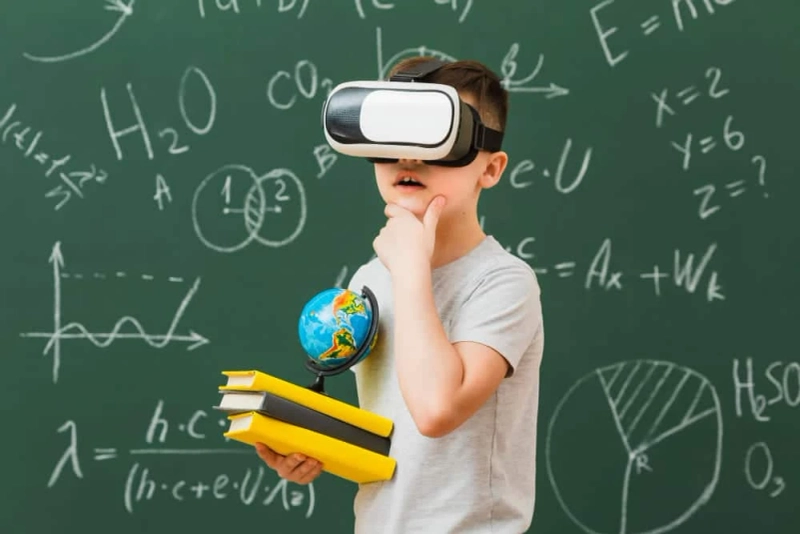Every aspect of human life is being driven by technological innovation, and the education industry is no different. Experts are focusing on finding and investigating new methods for making the monotonous learning process enjoyable, engaging, and rewarding. Gamification is one such unique methodology as we examine its use as a teaching tool and discuss its benefits further.
What is Gamification?
Gamification is not a very new concept but an old one that has recently gained wide popularity in the educational field. It refers to using games to increase learner motivation and engagement. A technique that incorporates elements of games into non-gaming contexts to boost interest, participation, and performance.
Has it ever crossed your mind why we become so engrossed in video games? It is common to get completely immersed in a video game and feel as though one more level will never be enough.
Well, dopamine, also known as the "feel-good chemical," is produced in response to playing video games, and has been related to gaming addiction. It was observed that the goal of creating video games was to engage and entertain gamers.
Therefore, gamification also makes use of these game-based components to create equivalent experiences and to engage and motivate people to take up activities that are not games. These techniques are increasingly becoming popular in contexts of digital marketing, website designing, corporate learning and in other productivity areas.
Gamification in Education- Is There a Future?
Gamification in education refers to the use of game-based components such as point scoring, earning badges, peer competition, teamwork, and ranking high on the leaderboard in non-game-based contexts.
It increases student commitment, aids in the absorption of new material, and assesses their level of knowledge. It can be used for academic subjects but is also used in self-study programs and courses.
According to the gamification technique, students retain information better while also having fun. They also learn better when they have objectives, benchmarks, and successes to aim for, provided that they are done in a way that the learner still finds the learning process enjoyable.
The whole technique makes sense only when these game-based aspects are applied to educational materials and we find similar engagement rates because of the addictive features of video games that draw youngsters and adults and hook them to these activities.
Gamification techniques strive to engage and entertain students in a manner that makes learning fun while also enhancing their grasping and retention power. However, it does not mean gamification is the conversion of the entire learning process into a game, rather it is the application of game design and features into contexts that are not game-based.
Gamification in Education - Learning Techniques
You can implement several gamification techniques in your learning environment. The most well-known ones are:
1. Giving Points for Completing Targets
Points are a great way to motivate students to put in extra time and effort. It is a reflection of their effort, time and engagement thereby depicting their growth throughout the course. The method is well-suited for academic and non-academic purposes.
2. Award Badges
Tangible awards can sometimes mean more than points and what can be a better option than awards? Awards are a great way to honour and appreciate students for their time and effort. These can be in any form from virtual ones to simple printed ones.
Awards motivate students to perform better and instil a sense of competition amongst them. Awards can be given to students for their success and achievements and can also act as a checkpoint for determining learning progress.
3. Creating Competition Through Leaderboards
Learning outcomes can be improved by creating competition through quests and leaderboards.
These are excellent for inciting competition among students since these activities will encourage them to study harder if they want to see their name at the top.
Participants can be divided into smaller groups, distinct teams can be created, and competition can be run amongst the teams for higher ranking on the leaderboard, thereby increasing competitiveness.
4. Creating Playful Barriers and Challenges
To promote motivation and encouragement, gamification techniques make use of playful elements, challenges and edutainment. The task given demands time and effort from the students but has no negative consequences even if they fail or are unable to complete it. Playful barriers can improve academic and behavioural aspects and include learning techniques like problem-solving, where students must think creatively to devise a solution.
Thus, the ability to accumulate points, rank well on leaderboards, and advance to new levels motivates students to take charge of their growth. With goal-oriented learning, students can advance at their own pace without feeling pressured to do poorly or lose enthusiasm. After getting an unsatisfactory outcome, gamified learning motivates students to try again, enabling them to advance to the next level at their own pace.
Benefits of Gamification in Education
There are several shown advantages of gamification in education, including:
- Students believe they are in control of their learning process. Thus, it creates a less stressful environment since students can simply try again if they fail.
- Students can experience many identities through various avatars or personas, which may help them discover an innate passion for studying.
- In gaming contexts, students are frequently more at ease, which makes them more proactive and willing to make errors.
- Funnier lessons in the classroom give a chance to think creatively beyond the box and increase levels of focus and involvement among pupils.
A few effective examples of Gamification in Education
- Duolingo- provides streaks for daily tasks
- Peloton- where you can rank high on the leaderboard for improved performance
- KnowRe- provides personalised mathematics learning through games
- Zondle- is a place where learning is accompanied by games
- ClassDojo- the fun way of learning through games, rewards and feedback
Is Gamification Effective?
Gamification is an effective tactic and a terrific approach to inspiring students. Gamification techniques are likely to become more prevalent as the educational landscape becomes increasingly digital. It is a fantastic tool for assisting people with their learning and inspiring them to work harder.
A good gamification method will be assessed by how well learning outcomes, learner engagement, and motivation have improved. It\'s time to review your design and make the required changes if your gamification tactics are failing to satisfy these requirements.
Lastly, your gamified learning experience must incorporate an ongoing assessment and feedback to develop and improve your learners in a way that best serves them.



